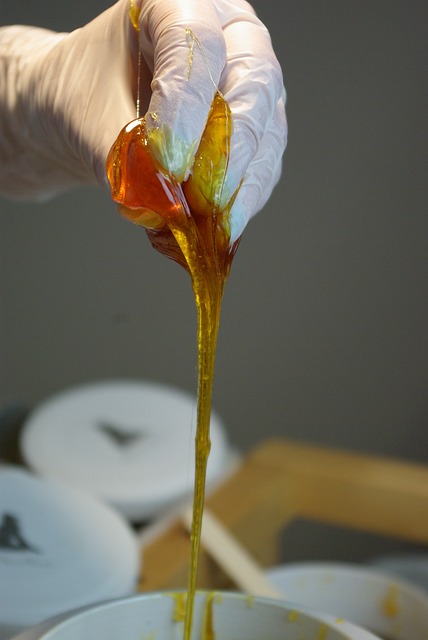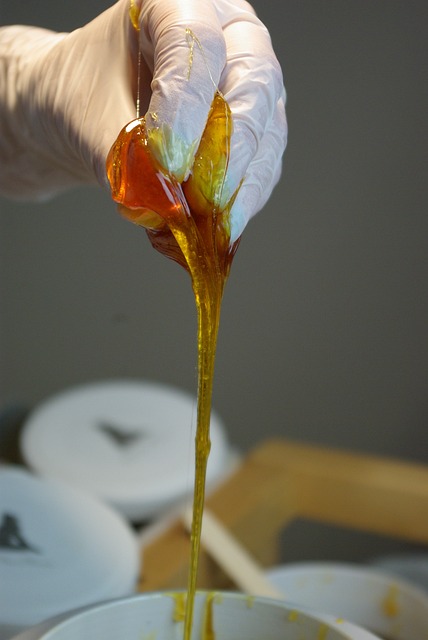Understanding different material types (wood, fabric, vinyl, leather) and their unique stain causes is crucial for effective removal. Specific cleaning methods are required for water-based vs. oil-based stains, with detergents, solvents, baking soda/vinegar used accordingly. Pre-treating fabric stains before washing, using mild soaps or dedicated cleaners for vinyl/leather, and testing products on small areas first are key steps. Eco-friendly options like vinegar, baking soda, lemon juice, and tea tree oil offer natural alternatives for stain removal without harsh chemicals. Professional cleaning solutions penetrate deep into fabrics and finishes, ensuring stubborn stains are removed safely. Regular maintenance, including vacuuming, brushing, and using protective covers, prevents new stains from forming, extending furniture life. For heavy damage or stubborn stains, seek professional intervention to ensure safe restoration tailored to your furniture's specific needs.
Looking to revive your furniture’s lustre? Discover effective stain removal techniques for various types of furniture, from wood and fabric to leather and vinyl. Learn about essential tools, pre-treatment steps, and home remedies for common stains. Explore the pros and cons of professional cleaning solutions and eco-friendly alternatives. Plus, find tips for preventive care and when to seek expert help for heavy damage. Master stain removal and keep your furniture looking its best with these comprehensive guides.
Understanding Different Types of Furniture Stains

Understanding different types of furniture stains is crucial for effective stain removal. Furniture can be made from various materials, each susceptible to unique stain causes and characteristics. Wood, for instance, may show signs of water damage, ink spots, or even mold and mildew. Fabric upholstery is prone to spills, pet accidents, and general wear and tear that lead to discoloration. Vinyl and leather, while durable, can still be marred by oil-based stains, ink, and harsh weather conditions. Knowing the specific type of stain you’re dealing with is essential for selecting the right cleaning method.
Different materials require distinct approaches to stain removal. For wood, using a mild detergent or specialized wood cleaner followed by careful blotting can effectively address water-based stains. Oil-based stains might need a more robust solution, like a solvent or a mixture of baking soda and vinegar. Fabric stains often respond well to pre-treating with a stain remover before gently washing or spot-cleaning. Vinyl and leather necessitate gentle cleaning with mild soaps or dedicated cleaners to prevent damaging the material.
Materials and Tools for Effective Stain Removal

When it comes to stain removal for furniture, having the right materials and tools is essential for achieving optimal results. Start with a good quality microfiber cloth or sponge, as these are gentle yet effective at picking up dirt and stains without leaving scratches. Warm water and a mild detergent or cleaning solution are your basics; always test any product on a small, inconspicuous area first to ensure it won’t damage the finish.
Don’t underestimate the power of vinegar and baking soda—these natural cleaners can be surprisingly effective for treating various stains. For tougher cases, consider using a specialty furniture cleaner designed specifically for stain removal. Always follow the manufacturer’s instructions carefully when using any cleaning product to avoid damaging the furniture’s finish or fabric.
Pre-Treatment: Preparing the Area Before Cleaning

Before tackling any stain removal process, proper preparation is key. The first step in effective stain removal for furniture is pre-treatment—a crucial process that ensures optimal cleaning results. Start by gently wiping away any excess dirt or debris from the stained area with a soft, dry cloth. This initial step prevents further spreading of the stain and prepares the surface for cleaning.
Once the surface is clean, apply a suitable pre-treatment product specifically designed for furniture care. These products can help break down stubborn stains, making them easier to remove. Follow the instructions on the pre-treatment solution, allowing it to sit on the stain for a recommended time before gently blotting or brushing it off—this step will often activate the cleaner and ensure better absorption into the stained area.
Home Remedies for Common Furniture Stains

When it comes to stain removal, home remedies can be a cost-effective and eco-friendly solution for common furniture stains. Vinegar, baking soda, and lemon juice are just a few household items that can effectively tackle various types of marks. For example, vinegar’s acidic nature makes it ideal for removing water stains and ink spots. You can create a paste from baking soda and gently rub it into scuff marks or rub a half-cut lemon onto wax or oil stains to lift them away.
These natural cleaners are gentle on most surfaces, making them safer than commercial products. However, always test any home remedy on a small, hidden area first to ensure it doesn’t cause discoloration or damage. While they may not work for every stain, these simple solutions offer a quick and easy way to refresh your furniture without the need for harsh chemicals.
Using Professional Cleaning Solutions

When it comes to stain removal for furniture, professional cleaning solutions offer a powerful and effective approach. These specialized products are designed to tackle even the most stubborn stains, ensuring your furniture looks as good as new. They often contain advanced formulas that penetrate deep into the fabric or finish, breaking down and removing dirt, oil, and other contaminants.
Professional cleaners can be particularly useful for delicate fabrics or unique finishes where regular household cleaners might cause damage. These solutions are tested and safe for various materials, providing a thorough clean without the risk of fading or discolouration. By investing in quality professional cleaning solutions, you can efficiently maintain your furniture, preserving its beauty and extending its lifespan.
Safe and Eco-Friendly Stain Removal Techniques

When it comes to stain removal for furniture, opting for safe and eco-friendly techniques is a wise choice for both your belongings and the environment. Many conventional cleaning products contain harsh chemicals that can not only damage delicate finishes but also leave behind toxic residues. Instead, consider natural alternatives that are just as effective. Baking soda, for instance, is an excellent abrasive cleaner that can lift stains without scratching wood or other surfaces. Lemon juice, a powerful natural disinfectant, can cut through grease and grime while leaving a fresh scent.
Another eco-friendly option is using white vinegar, which acts as a natural degreaser and can dissolve various types of stains. For water-based stains, mixing equal parts vinegar and water creates a gentle yet powerful cleaning solution. Additionally, essential oils like tea tree oil have antimicrobial properties and can be added to your cleaning mixtures for enhanced disinfection without the need for synthetic chemicals. These safe and sustainable methods not only ensure the longevity of your furniture but also contribute to a greener lifestyle.
Handling Tough Stains: Persistent and Set-in Marks

When it comes to stain removal, furniture with persistent and set-in marks can seem like a challenge. However, with the right approach, even tough stains can be tackled effectively. The key is to act quickly as soon as the stain appears. Delve into specialized stain removal products designed for upholstery or wooden surfaces, which often contain powerful yet safe cleaning agents that can break down and lift stubborn marks.
For deep-seated stains, consider a combination of techniques. Start with blotting the excess stain with a clean cloth or paper towel to prevent it from setting further. Then, apply a small amount of the chosen stain remover directly onto the mark, following the product’s instructions for safe and effective use. Allow it to penetrate for a few minutes before gently scrubbing the area with a soft-bristled brush or a clean, damp sponge. Rinse thoroughly with water, ensuring no residue remains, and blot dry with a microfiber cloth for optimal results in stain removal.
Preventive Measures to Keep Furniture Looking New

Regular cleaning and maintenance are key to preventing furniture stains. Start by vacuuming or brushing your furniture regularly to remove loose dirt, dust, and debris. This simple step can prevent many stubborn stains from forming in the first place. Additionally, using protective covers, especially on pieces that see heavy traffic or are prone to spills, is an effective preventive measure.
Wipe down your furniture with a microfiber cloth dampened with a mild cleaning solution suitable for the material. This practice not only keeps surfaces clean but also creates a barrier against stains by removing excess moisture and oils from your hands and typical household items. Remember, proactive care through regular cleaning and proper protection can significantly extend the life of your furniture and keep it looking new, reducing the need for frequent stain removal efforts.
When to Seek Professional Help for Heavy Damage

If stains on your furniture are fresh and easily treatable at home, it’s often best to tackle them with over-the-counter stain removers or natural cleaning solutions. However, there comes a point when DIY methods simply won’t cut it. Heavy damage, such as deep cuts, extensive discoloration beyond repair, or stubborn stains that resist all efforts, requires professional intervention.
Seeking expert help is crucial when the furniture’s structural integrity is compromised or when specialized equipment and knowledge are needed to avoid further damage. Professionals in stain removal have access to advanced tools and treatments designed specifically for delicate fabrics, antique pieces, or unique materials. They can offer advice tailored to your furniture’s specific needs, ensuring a safe and effective restoration.
